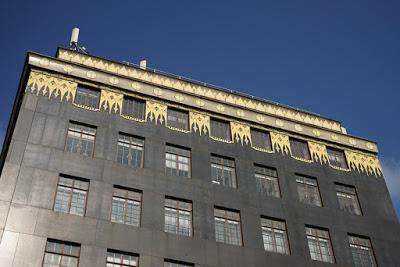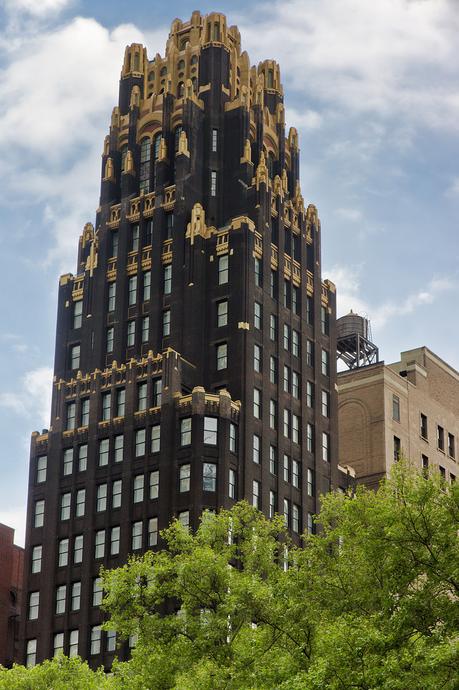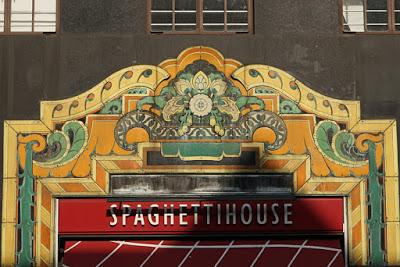
This dark, stern Art Deco building with its colourful touches of enamel decoration is a real contrast to the Arts and Crafts half-timbering of Liberty across the road. It's all the more striking since they were built only five years apart, with the Deco block completed in 1929. This sleek, shiny office building is Ideal House, originally the British headquarters of the National Radiator Company.

The company was in fact American, and their rather incongruous London home was designed by the same architect as the parent company's Manhattan building. Raymond Hood was working on a very different scale here, though, and with a different partner: British architect Gordon Jeeves, who worked on many other London buildings including Earl's Court Exhibition Centre and Dolphin Square. Their version is not only smaller but rather less Gothic and more Egyptian in inspiration than its New York counterpart.

American Radiator Building, New York City
The choice of black and gold matched the company's colours, although black granite also had practical advantages in the polluted city.Ideal House was part of the company's expansion in Europe; they had a factory in Hull from 1906 and also had subsidiaries in France and Germany. In 1934, the British division of the company became known as Ideal Boilers & Radiators; in 1953 it became Ideal Standard.

Today it's known as Palladium House, and the former ground floor showrooms are home to an Italian restaurant. Grade II listing should ensure that it's here to surprise us for some time to come.

